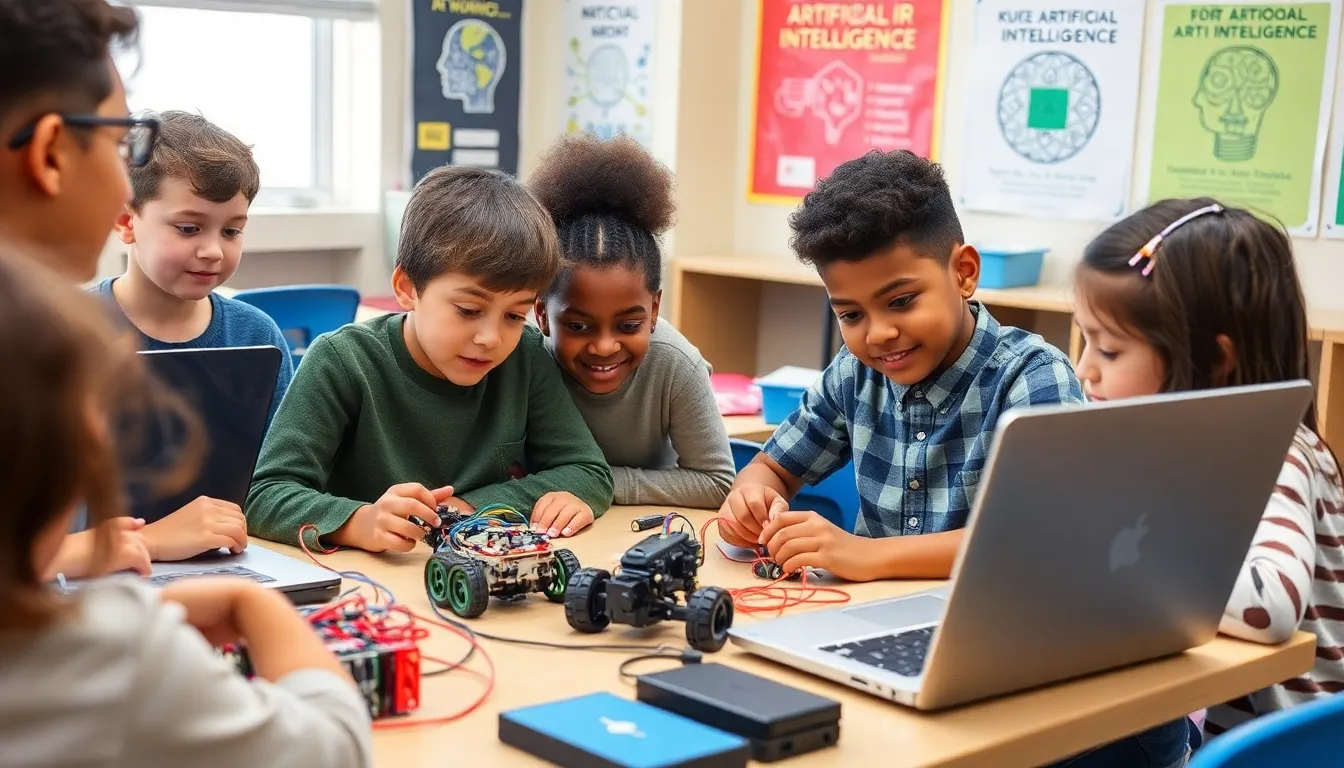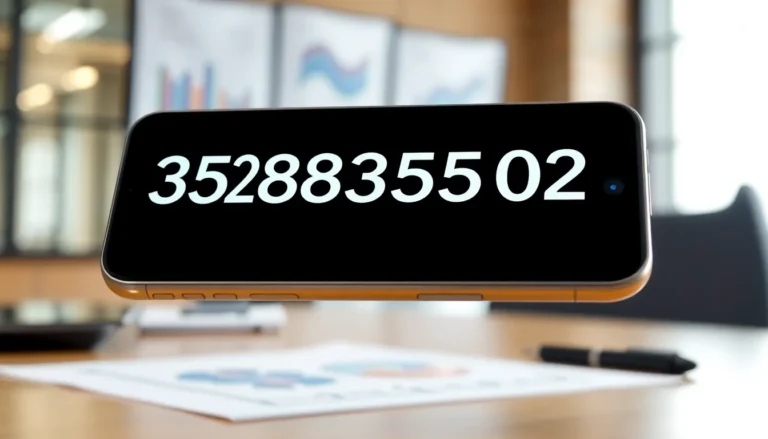In a world where robots can flip pancakes and chat with you about your favorite ice cream flavor, artificial intelligence isn’t just for adults anymore. Kids today are growing up in a tech-savvy environment where understanding AI can unlock a treasure trove of creativity and innovation. Imagine your child creating a smart buddy that helps with homework or even a virtual pet that learns tricks. Sounds like magic, right?
But it’s not just about fun and games. Learning about AI equips kids with critical thinking skills and problem-solving abilities that are essential in our fast-paced world. So why not let them dive into this fascinating realm? With the right tools and guidance, they can become the next generation of tech wizards, all while having a blast. After all, who wouldn’t want to befriend a robot that can tell jokes?
Table of Contents
ToggleWhat Is Artificial Intelligence?
Artificial intelligence, or AI, refers to computer systems designed to perform tasks that typically require human intelligence. This technology plays a vital role in everyday life, especially for children surrounded by digital devices.
Definition and Concepts
AI encompasses various concepts, including machine learning and natural language processing. Machine learning allows systems to learn from data and improve over time. Natural language processing enables computers to understand and respond to human language. Together, these elements form the foundation of AI, allowing machines to perform complex tasks. By grasping these fundamental concepts, kids can appreciate how AI influences games, apps, and robotics in their daily activities.
Examples for Kids
Kids encounter AI in numerous ways. Voice assistants like Siri or Alexa respond to spoken commands. Video games use AI to create smart characters that adapt to player actions. Educational apps personalize learning experiences, adjusting challenges based on performance. Robotics kits, such as LEGO Mindstorms, enable kids to build and program their robots using AI principles. These examples illustrate how AI integrates into fun and interactive activities, sparking interest in technology and innovation.
Benefits of Artificial Intelligence for Kids

Artificial intelligence offers numerous advantages for children. It enhances their learning experiences while encouraging creativity.
Enhancing Learning
AI supports personalized education. Adaptive learning platforms tailor content to match each child’s pace and style. Tools like intelligent tutoring systems provide instant feedback, helping kids grasp difficult concepts. Incorporating AI in educational apps often boosts engagement. Kids become more interested in subjects when lessons are interactive and relevant. Additionally, data collected through AI helps teachers identify each student’s strengths and weaknesses, allowing for targeted interventions. This personalized approach promotes better academic performance and retention of knowledge.
Encouraging Creativity
Creativity flourishes with AI assistance. Tools like coding platforms and design software empower kids to create projects. They can build video games, design animations, or compose music using AI technologies. Exposure to these tools fosters innovative thinking and problem-solving skills. Kids learn to express themselves uniquely while exploring various artistic avenues. Collaborating with AI can lead to unexpected ideas and enhance imagination. Engaging with AI in creative ways inspires the next generation to innovate, pushing boundaries and transforming their visions into reality.
Tools and Resources
Various tools and resources engage children in artificial intelligence, enhancing their understanding and creativity. Parents can utilize these tools to foster a love for technology in their kids.
Fun Apps and Games
Many engaging apps capture children’s attention while teaching them about AI. Tynker offers coding games that introduce programming concepts for building games and apps. LightBot challenges players to solve puzzles using logic and programming skills. Blockly Game helps young learners grasp coding through fun tasks that unlock robots’ moves. These interactive tools make learning enjoyable and encourage tech-savvy exploration.
Educational Websites
Numerous educational websites deliver structured AI content to kids. Code.org provides various tutorials and activities for beginners to learn coding fundamentals through games and interactive lessons. AI4K12 offers resources for educators to introduce AI concepts in classrooms, targeting K-12 students. Kids can explore learning experiences on Scratch, where they create projects while diving into coding basics. Accessible and informative, these websites empower children to engage with AI meaningfully.
How to Introduce AI to Kids
Introducing artificial intelligence (AI) to children can be a fun and rewarding experience. Consider engaging them in age-appropriate activities and thought-provoking discussions.
Age-Appropriate Activities
Selecting suitable activities enhances children’s understanding of AI concepts. For preschoolers, try interactive apps like LightBot, which teaches basic programming through puzzles. Older kids benefit from robotics kits such as LEGO Mindstorms, allowing them to build and program their robots. Coding platforms like Scratch offer more advanced opportunities for elementary and middle schoolers. These platforms enable kids to create animations and simple games, fostering creativity and logical thinking. Additionally, game-based learning with AI elements encourages exploration, making learning enjoyable and interactive.
Engaging Discussions
Encouraging discussions about AI cultivates curiosity and understanding. Start by asking kids about their experiences with AI in daily life, such as voice assistants or smart devices. Explore questions like, “How do you think Alexa understands your requests?” or “What tasks would you want a robot to do?” Promoting open-ended conversations allows children to express their thoughts and ideas. Discussing AI’s implications in society, ethical considerations, and future technologies can spark their interest further. Sharing recent advancements in AI can also stimulate excitement and motivate them to learn more about this evolving field.
Embracing artificial intelligence in children’s lives opens up a world of possibilities. By nurturing their curiosity and creativity, parents can empower kids to become future innovators. Engaging with AI not only enhances learning but also equips them with critical skills needed in a technology-driven world.
As children explore various tools and resources, they’ll discover the joy of creating and problem-solving. This journey into AI can inspire a lifelong passion for technology. With the right guidance and encouragement, kids can thrive in this digital age, transforming their ideas into reality and shaping the future.





